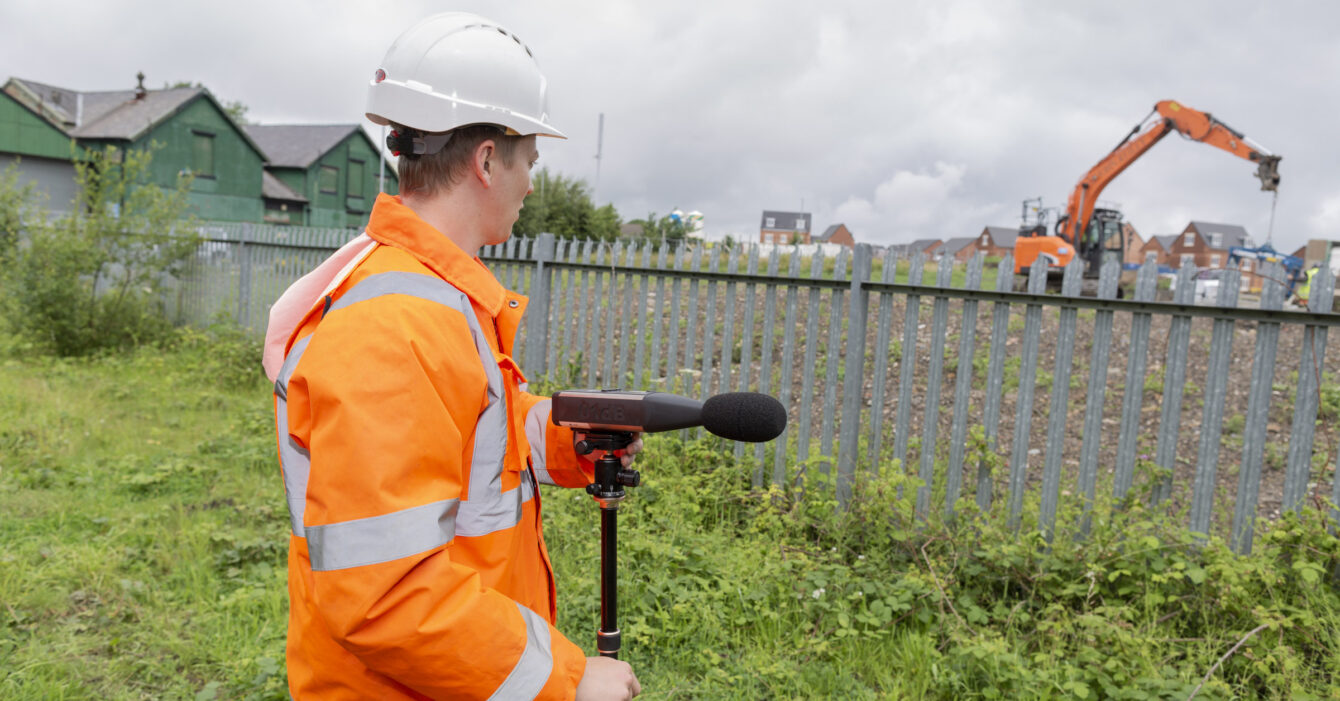It’s likely you’re familiar with the term “British Standards” if you’ve ever read a Noise Assessment or are involved in planning applications. But you may not know exactly what they are or how they work. The British Standards are a set of regulations that govern practices in the UK. These codes are developed by the British Standards Institution (BSI). The BSI is a non-profit organization that works to ensure safety and quality in various industries. The British Standards are a crucial component of a Noise and Vibration Assessment and control how a Environmental Consultant undertakes such works. In this blog, we will explore some of the most widely used standards that govern how noise and vibration is measured and assessed.
What is a BS8233 Noise Assessment?
If you are looking to find out more about a BS8233 noise assessment which is the British Standard that provides guidance on sound insulation and noise reduction in buildings. The standard ensures new and renovated buildings have good noise insulation for residents’ protection. It covers the control of noise from a plant and services within a building and provides criteria and limits for different situations. BS8233 specifies the lowest ambient noise levels for private spaces and the highest for commercial areas. It also gives you guidance on noise levels for outdoor areas like gardens and balconies. The standard is intended for use by non-specialist designers, building control professionals and constructors. It covers the sound insulation values of basic materials and noise levels from external sources.
BS8233 provides guidelines for different situations. It offers basic and detailed information for both non-acoustic and acoustic experts. The standard uses research and experience to help design buildings with suitable internal acoustics. It has helpful details about blocking sound in homes, sound rating charts, and how well common building materials stop sound.

Why do I need a BS4142 Noise Survey?
A BS4142 noise survey is used to assess the impact of industrial and commercial noise sources on noise sensitive premises. BS 4142 provides you with methods for the rating and assessing of sounds of a industrial and commercial nature. It measures noise levels from production processes, machines, loading/unloading activities, and vehicles.
You need a BS4142 noise survey if you’re introducing a new commercial/industrial sound source or building new premises near noisy industrial or commercial areas. The survey is required before applying for planning permission or as a condition of planning permission approval. Noise survey reports help the authorities assess how noise from a project will affect the environment and take action to reduce it. A BS4142 noise survey measures background noise, industrial noise emissions, and noise impact. It also recommends mitigation measures to protect nearby sensitive premises from noise.
A Guide to BS6472 Vibration Assessment
BS6472 is a British Standard guide for assessing building vibrations with a frequency of 1Hz up to 80 Hz. This standard gives guidance on how to measure and evaluate types of vibration and how to assess vibration conditions. The standard offers advice on measurement methods and on how people inside buildings respond to building vibration. It covers both external sources, such as construction, demolition, and rail. It also covers internal sources such as lifts, air-conditioning or ventilation plant and heavy office machinery.
BS 6472-2 offers guidance on the problems associated with periodic blasting within the range of an occupied building. The standard gives advice on how to limit human exposure to vibration caused by blasting in buildings. For instance, mining, construction, and demolition can cause blast-induced vibration.
Overall, BS 6472 is an essential guide for anyone who is exposed to building vibrations. The standard helps to measure and assess vibration accurately and take steps to reduce its impact on the environment and individuals.
A Guide to BS5228 Construction Noise and Vibration
BS5228 provides a code of practice for noise and vibration control during construction and open site operations. It aims to protect those living and working near construction sites from noise and vibration. The standard provides ways to control noise and vibration, and it can be used by architects, planners, contractors, and others. BS5228 has undergone some significant changes, including being restructured into two parts. One focusing on noise and the other on vibration. The updated standard has more information about the law and ways to control noise and vibration.
BS5228 is a guide that recommends ways to control noise levels during construction and open site operations. It provides details on laws for controlling noise and vibration, ways to measure and predict them, and how they affect people. BS 5228-1:2009+A1:2014 mainly focuses on noise, while BS 5228-2:2009+A1:2014 concentrates on vibration. Collaboration between developers, site operators, and local authorities can reduce construction noise and vibrations.
Why we use and comply with the British Standards
Standards are powerful tools that drive innovation, increase productivity, and make life easier and safer. There are currently over 30,000 standards used in the UK. By embracing these standards, we can achieve excellence, innovation, and a high-quality built environment.

